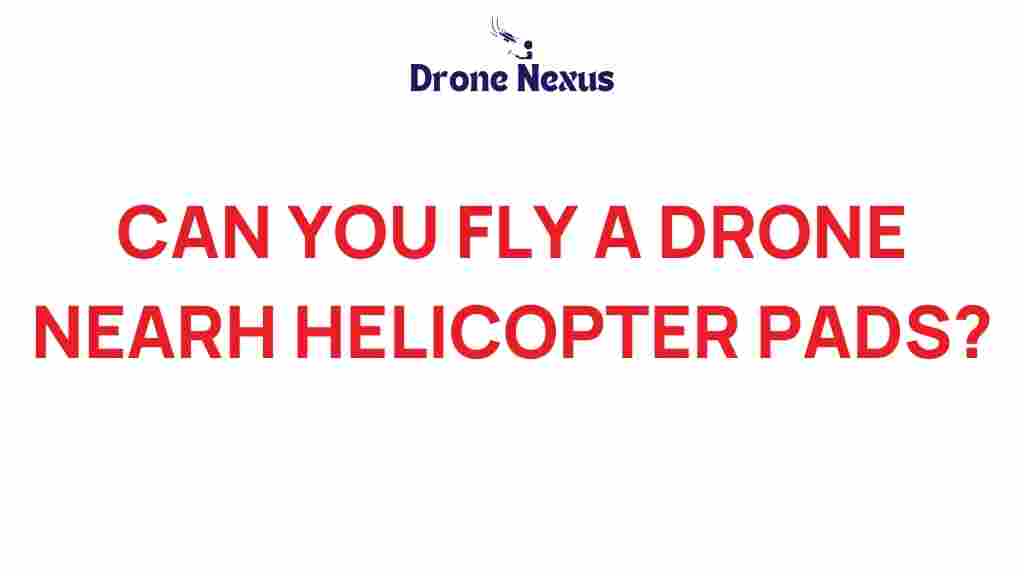Drone Regulations: Understanding the Rules Near Helicopter Pads
As drone technology continues to advance, the popularity of flying drones has skyrocketed. However, with this newfound freedom comes a set of responsibilities, particularly when it comes to drone regulations. One area of concern is flying drones near helicopter pads. This article will guide you through the intricacies of drone regulations in proximity to helicopter pads, ensuring you stay compliant while enjoying your aerial adventures.
The Importance of Understanding Drone Regulations
Before we delve into the specifics of flying drones near helicopter pads, it’s essential to understand why drone regulations exist. These regulations are designed to:
- Ensure safety for all airspace users, including manned aircraft.
- Protect people and property on the ground.
- Maintain privacy and reduce potential conflicts.
- Facilitate the growth of drone technology within a structured framework.
Understanding and adhering to drone regulations is crucial for both recreational and commercial drone pilots. Violating these regulations can lead to severe penalties, including fines and confiscation of equipment.
Key Drone Regulations to Consider Near Helicopter Pads
When flying a drone, especially near helicopter pads, several regulations come into play. Here are the most critical factors to keep in mind:
1. Airspace Classification
The airspace around helicopter pads may be classified as controlled or uncontrolled. Controlled airspace requires specific permissions to operate a drone. Be sure to check the classification of the airspace where the helicopter pad is located. You can use tools like FAA’s B4UFLY app to determine the airspace classification.
2. Distance Restrictions
Drone regulations often stipulate a minimum distance that drones must maintain from helipads. In many cases, this distance is at least 5 miles from airports and helicopter facilities. Always verify the specific requirements in your area.
3. Visual Line of Sight
According to drone regulations, you must always keep your drone within your visual line of sight. This is particularly important near helicopter pads, where sudden and unexpected air traffic can occur.
4. Notification and Permission
In some cases, flying a drone near a helicopter pad may require you to notify the facility or obtain permission. It is essential to reach out to local authorities or the helicopter facility to ensure compliance.
Step-by-Step Process: How to Fly a Drone Near Helicopter Pads Safely
Flying a drone near helicopter pads can be done safely if you follow a specific process. Here’s a step-by-step guide:
Step 1: Research Local Drone Regulations
Before flying, familiarize yourself with local drone regulations. Consult the FAA and local aviation authorities for any specific rules related to your area.
Step 2: Check Airspace Status
Use online resources or apps to check the airspace classification surrounding the helicopter pad. If it is controlled airspace, you may need to apply for a Temporary Flight Restriction (TFR).
Step 3: Plan Your Flight
Map out your flight path, ensuring that you avoid the helicopter pad vicinity. Identify safe take-off and landing zones that are far enough away from any potential hazards.
Step 4: Notify Relevant Authorities
If necessary, contact the helicopter pad facility to notify them of your intended flight. This step is crucial for ensuring you’re not flying during peak helicopter traffic times.
Step 5: Conduct a Pre-Flight Check
Before taking off, perform a thorough pre-flight check of your drone. Ensure batteries are charged, the drone is in working condition, and all safety features are functional.
Step 6: Maintain Visual Line of Sight
As you fly your drone, make sure to keep it within your line of sight. This is not only a regulation but also a safety measure to help you avoid unexpected encounters with manned aircraft.
Troubleshooting Tips for Flying Near Helicopter Pads
Despite careful planning, issues may arise while flying near helicopter pads. Here are some troubleshooting tips to help you navigate potential problems:
1. Loss of Signal
If you experience signal loss, immediately bring your drone back to a safe landing position. Avoid attempting to regain control if you’re too close to the helicopter pad.
2. Sudden Weather Changes
Weather can change rapidly, especially in open areas. If conditions worsen, prioritize safety by landing your drone as soon as possible.
3. Unexpected Helicopter Activity
Always be vigilant. If you notice helicopters approaching, land your drone promptly. It’s better to be safe than sorry.
4. Equipment Malfunction
In case of equipment failure, ensure you have an emergency landing plan. Familiarize yourself with your drone’s fail-safe features to aid in safe landings.
Conclusion: Fly Responsibly Near Helicopter Pads
Flying a drone near helicopter pads can be an exhilarating experience, but it comes with significant responsibilities. Understanding drone regulations is paramount to ensuring safety for yourself and others. Always research local regulations, respect airspace classifications, and maintain communication with relevant authorities.
By following the guidelines outlined in this article, you can enjoy flying your drone while staying compliant with drone regulations. Remember, responsible flying not only safeguards your interests but also enhances the reputation of the drone community as a whole.
For more information on drone regulations, visit the FAA’s official website for comprehensive resources.
This article is in the category Safety and created by DroneNexus Team
